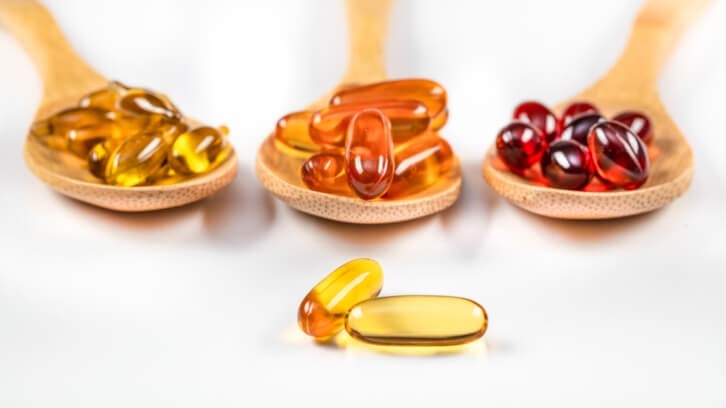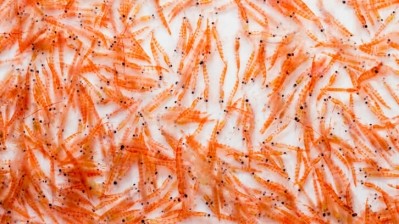Guest Article
Omega-3 Market Update: It’s All About the Supply

The challenging situation actually began in 2022, when the production of crude oil was lower than in previous years, leading to increased prices. As a result, many refiners and concentrators did not buy oil and chose to rely on existing stocks in anticipation of a better season in 2023. Then in June of this year, the first of two fishing seasons in the North Central region of Peru (the largest fishing area) was cancelled within a few days of opening, due to a high number of juveniles.
The situation was exacerbated by the presence of an El Niño event, which is warming the waters and moving the adult anchovy biomass away from the fishing areas accessible to industrial fishing companies. In mid-2023 there were doubts that there would be a second season this year but fast forward to October 2023 and PRODUCE, the Peruvian Ministry of Production, set a quota of 1.6 million metric tons of anchovy. By the beginning of December, more than 60% of the quota had been caught but oil yields in the anchovy were very low (meaning the fish are “lean” rather than “fat”), which will result in less EPA and DHA oil being produced.
Of course, the omega-3 industry is more than just anchovy oil, with omega-3 products on store shelves from other fish sources including salmon oil, tuna oil, cod liver oil and pollock oil, plus other marine sources such as krill and calanus. Algae is a fast growing and desirable alternative source of EPA and DHA, but has historically been priced much higher than fish oil. Genetically-modified canola oil is a newer entrant into the market with a plant-based alternative offering.
While many of these sources are well positioned with stock available, all of these sources combined cannot currently replace the shortfall in anchovy oil supply. There is considerable interest in increasing production for these sources, but efforts to scale will take time and won’t resolve the current situation. In the longer term, oils that can guarantee stability of production and price (even if that price is higher than anchovy oils) will be considered attractive and these additional sources will help manage the risk inherent in the variability of fish oil availability.
The conversation at the brand level is one of concern about how the category will evolve — will there be fewer premium products because of the price increases, or fewer private label products because those manufacturers cannot get access to oil? Most larger brands reportedly have the necessary supply through at least the middle of next year. There have also been concerns about retailers not understanding the situation and accepting price increases, but out of necessity, price increases have been moving through the supply chain. It’s important to note that omega-3s are an important category for retailers and they will not easily phase out the entire category because of stock shortages. However, it is likely that the types of products available may shift and consumer preferences and brand loyalty will be tested.
On the Global Front
On the global front, a topic that was a major focus this year, particularly in the Asian market, was the release in August of wastewater from the Fukushima Daichii nuclear power station. Although this has not made headlines in the US media, GOED heard from many Asian GOED members that their customers were concerned about this issue and China banned all seafood imports from Japan.
As background, nearly all radionuclides from the nuclear accident have been removed from the wastewater by filtration, with only tritium (hydrogen-3), an isotope of hydrogen, remaining. The tritium concentration in released wastewater will be controlled at 1/40th of the safety standard set by the Japanese government and 1/7th of the drinking water guideline set by the World Health Organization (WHO). While it is highly unlikely that tritium will be incorporated to measurable levels into fish and seafood, this is unknown at this time and will need to be confirmed in the coming years. At this time GOED does not consider the release of Fukushima wastewater to pose a risk of contamination for omega-3 oils.
In other world news, acknowledging the strong interest in the algal market, GOED has submitted a proposal for new work to Codex Alimentarius asking the organization to consider the creation of an algal oil standard. A decision on whether the proposal will move forward will occur at a Codex Committee on Fats and Oils meeting in February 2024.
Focusing back on the US, the other topic GOED has been watching has been Class Action Lawsuits, with three alleging omega-3 fatty acid ethyl esters are not fish oils and therefore should not be labelled as fish oil. The first of six cases was filed in May 2021, with three of the cases dismissed thus far and the three remaining cases making their way through the courts. At this point, their fate is unclear, but consumers purchased the products in question for their EPA/DHA content and that’s exactly what they got. GOED is also watching a class action complaint related to allegations that the defendant defrauded consumers by making a generic “supports brain health” claim. While this class action complaint stands alone, GOED is aware of two demand letters sent to companies with similar complaints.
Looking Ahead to 2024
While the short-term supply situation is certainly of concern, the long term outlook for omega-3s is strong. The omega-3 industry relies on natural sources, and production volumes are subject to yearly changes in biomass, quotas and oil content and composition. This year is an extreme example of this normal variation, but there are no fundamental reasons to expect the long-term supply situation to be at risk. Furthermore, sources in Peru predict strong 2024 fishing seasons, since there is a documented large biomass of anchovy, and reportedly more food for the fish becoming available (leading to higher fat content in the fish).
Also, new sources of EPA and DHA continue to be developed and additional capacity, particularly for algae, will allow for a solid supply situation long-term. Couple this with continued strong consumer demand and ongoing regular publications of new scientific research on the benefits of EPA and DHA and – the next 6-12 months notwithstanding – omega-3s should continue to remain a key supplement category around the world.














